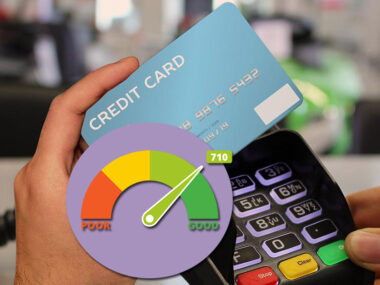A credit score of 695 is a sign that you have healthy credit. In fact, according to the FICO credit scoring model, you officially have entered the “Good” credit range, which extends from 670 to 739.
Good credit is a great start. However, it’s important that you take steps to maintain your positive credit momentum.
The following information expounds on the benefits and limitations that come with Good credit. It is also bookended with tips that can help you discover the good, the bad, and the ugly behind your 695 score as well as how you can improve it in the future.
Table of Contents
Why Your Credit Score Is 695
It’s difficult to do much to improve your score if you don’t understand how you got it in the first place.
Unfortunately, there isn’t a cut-and-dried reason for a score of 695. Each score is a unique combination of calculations based on your own financial history.
Nevertheless, there are several common factors that tend to influence all credit scores. Things like payment history and total debt can either raise or lower your score depending on the circumstances.
Consider each of the following categories. How has each one impacted your score of 695? Has your past financial behavior in each area helped or hindered your score?
Payment History and Derogatory Marks
Your payment history is the number one most important thing that impacts your credit score. It accounts for 35% of your total score. The concept is simple. If you make your payments in full, on time, and consistently over the long-haul, it can be a huge factor in improving your credit.
If you don’t make payments — and especially if you chronically miss payments — it can hurt your score. This often shows up on your credit report as a derogatory mark. A derogatory mark can be for anything from a claim by a collection agency or a delinquent account to something as serious as a foreclosure or bankruptcy.
Regardless of the kind of mark, once on your report, it can last for several years. You should always do your best to resolve any marks that you find and then send a goodwill letter to the original lender asking them if they would be willing to proactively remove the mark early.
As an additional note, your score can also be lowered by a hard inquiry. This takes place when a lender officially checks your credit report — something referred to as a “hard pull” — before giving you a loan. The good news is that this is a normal occurrence, and it should only impact your score for a year or less.
Credit Utilization Ratio and Total Debt
Your credit utilization ratio and total debt are also important litmus tests for your credit score. These two items tend to address revolving and non-revolving credit, respectively.
Your credit utilization ratio is the percentage of your revolving credit that you’ve already borrowed. If this gets to be over 30% on your various lines of credit, it can lower your score. The inability to pay back your revolving credit is a warning for lenders to think twice before loaning you even more money.
Your total debt is the amount of non-revolving credit that you’ve borrowed. This consists of lump-sum loans, such as auto loans, student loans, or a mortgage. If your total debt gets too high, it can hurt your score, as it shows that you can’t properly manage your existing debt.
Credit Mix and Age
The last two factors that can impact your score are your credit mix and the average age of your credit.
Your credit mix is the variety of different forms of credit that you have. For instance, you can have:
- An auto loan;
- Student loans;
- A mortgage;
- Credit cards;
- A home equity loan or line of credit.
If you only have one or two of these, it limits your credit score. However, the more of a mix of credit options you responsibly use, the higher your credit score can rise.
In addition, the overall age of your credit matters. This is an average of all of your different lines of credit. If you are younger or you recently opened a new line of credit, it can lower your average credit age — and your credit score, by extension.
As you go through each of these, remember to take notes. Point out positive behaviors that you want to reinforce, such as making payments on time. Also highlight negative patterns that you notice, like opening up a new line of credit without a good reason.
Use both the good and the bad notations to inform your financial planning and create a long-term strategy to boost your score.
What Can You Do With a 695 Credit Score?
If you have a credit score of 695, it means you can start to tap into the many benefits that come with good credit. These include things like:
- Easily passing employer credit checks when applying for a job;
- Getting approved for an apartment and having a lower security deposit;
- Increasing your negotiating power and allowing you to refinance existing loans;
- Getting a mortgage or other personal loans more easily;
- Qualifying for lower interest rates, higher borrowing limits, and credit card rewards.
While all of these become potentially available to you at a score of 695, many of them will be limited. You want to continue to increase your credit score into the “Very Good” and “Exceptional” ranges if you want to experience the full range of good credit benefits.
How to Improve a 695 Credit Score
While a “Good” credit score is good (it’s in the name, after all) it’s important to continue to work to take your score from good to great.
Fortunately, if your score is at 695, you are working from a place of strength. You are nearly thirty points above the Fair credit range, and likely don’t have too many major financial hurdles to get over.
Nevertheless, there are always small ways you can work to improve your score. Here are a few suggestions to get you started:
- Review your credit report every year so that you can dispute errors and fix derogatory marks;
- Responsibly manage your revolving credit and pay down your non-revolving debt;
- Create and stick to a budget that helps you live within your means;
- Use the research of your past financial activity to create a financial plan to help guide future decisions.
If you continue to steadily improve your current financial situation, you’ll gradually raise your credit score far above its current grade. This will open up various financial benefits far into the future.
Image Source: https://depositphotos.com/





